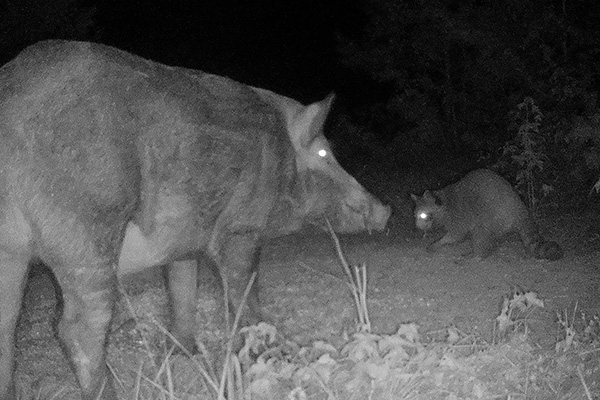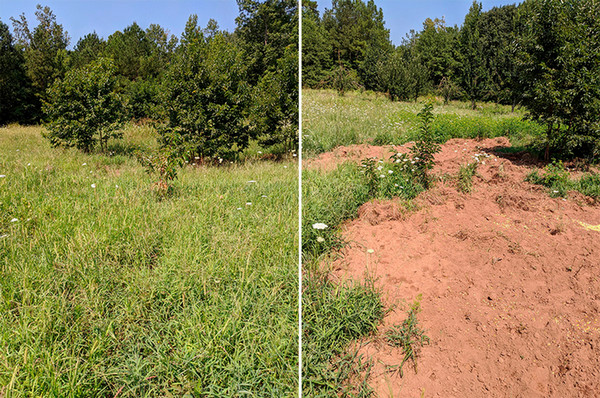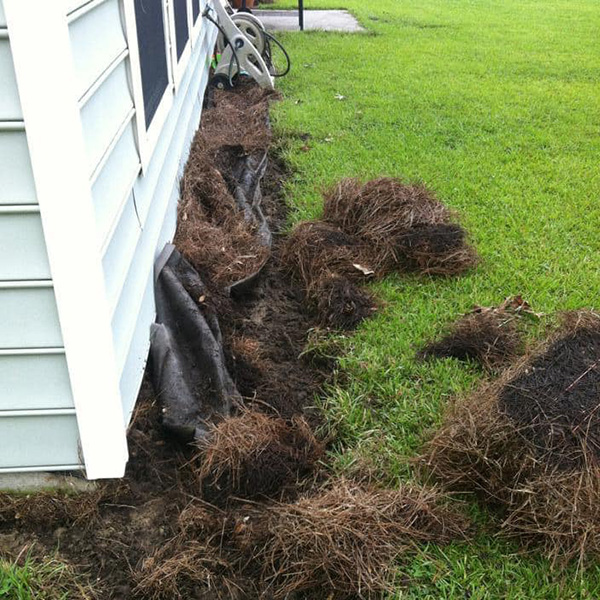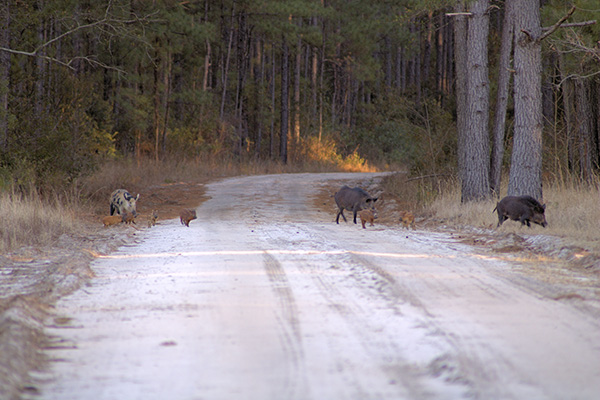Crop damage is an important factor when considering the management of hogs. They will destroy crops by trampling them, rooting around in fields, and directly feeding on the crops. The amount of damage usually depends on the type of crops and the amount of hogs in an area. They can also damage machinery used for farming. Hogs commonly target corn, peanuts, soybeans, sorghum, wheat, and rice.Estimates of damage caused by hogs can vary. In 2016, one study estimated the damages to crops (corn, soybeans, wheat, rice, sorghum) in 11 southeastern states to be $190 million per year.
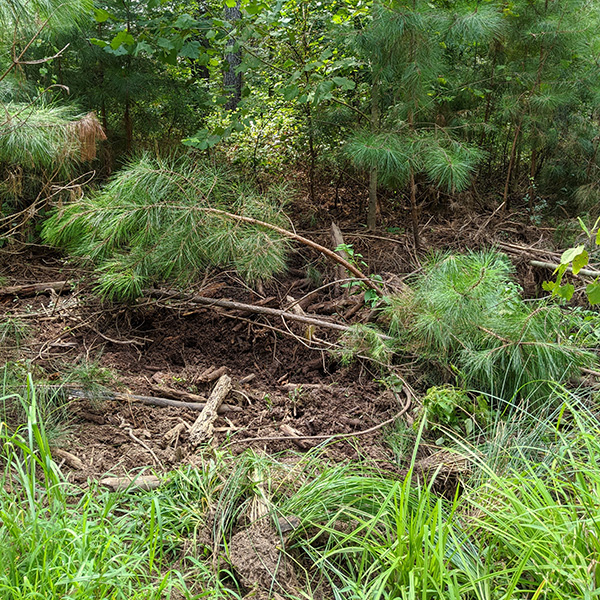
Damage to young pines caused by pigs in McCormick County, SC. (Photo by Andrew Jamison)
